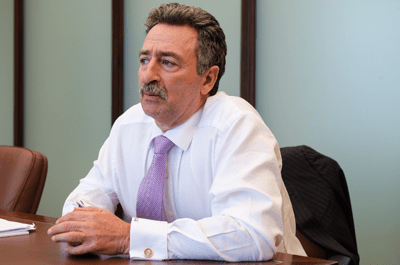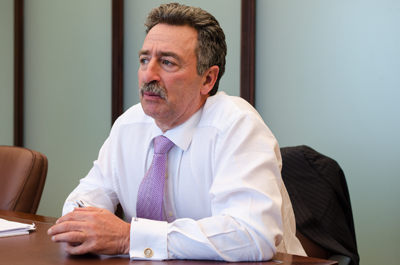Lawyer’s View: Borrowers
By Damian Ghigliotty September 9, 2013 11:02 am
reprints
Jonathan Mechanic
Partner & Chairman of the Real Estate Department
In 2012 and the beginning of 2013, your firm, with partners Stephen Lefkowitz and Tal Galomb, represented Related Companies in its purchase of Hudson Yards from the MTA, and you represented coach, which purchased 740,00 square feet of the first building to be constructed there. Was that a complicated deal with all of the parties that were involved?

It was a very complicated deal, but it worked. Starwood Capital Group provided a $450 million loan for the project and Coach provided a comparable loan facility, both of which were secured initially by both Related and Coach in the project. It was almost as if they were developing the building together, except that Coach was developing its portion of the building and Related was developing its portion of the building, so there was a complicated loan structure that had to be created that would allow them each to borrow, build and then separate the property into two separate buildings. Related also raised equity for the project from some other players, including J.P. Morgan and a sovereign wealth fund.
How did the financing for that deal come about?
After the deal was made between Related and Coach, they had a structure in place that allowed them to go into the market and try to raise debt. In early 2012, they went to some of the traditional banks, but the banks at that point in time were very conservative in their lending criteria, and, because of the size of the loan, they were going to need to borrow from more than just one bank. Sometimes when you put several banks together, you get to the lowest common denominator, and so every bank was negotiating with the others, saying, “Well, we should get this” and “We should get that.” By the time they were done, they had a great deal that the banks wanted to do but nobody else wanted to do.
Related and Coach ended up doing a more structured deal with Starwood, who I thought was very creative and thoughtful. I also found the interaction between Coach, Related and Starwood to be very impressive in terms of them finding solutions to complex problems. The people who came in on the equity side also worked well with all the parties involved.
What sort of legal challenges did that deal present?
The biggest legal challenge was coming up with a structure that would be acceptable to Starwood, acceptable to Coach, acceptable to Related, acceptable to the three or four equity participants and acceptable to the MTA, who was in effect ground-leasing the site to Related. So they had to be comfortable that the financial package worked for everybody and that all the requirements of the public approvals were met with the Department of City Planning and the Department of Buildings.
What were the biggest points of contention with that deal?
Let’s just say not everybody agreed on everything at the outset, from financing negotiations to architectural details. But over a period of time, I think they all fashioned appropriate solutions.
Are there any other particularly complicated borrower transactions that you worked on in the past two years?
We represented a different borrower in a retail deal on the west side of Manhattan in 2012 where there was a loan already in place. The value of the retail property had increased significantly, so there was an opportunity to buy out the existing tenant, who was at a very below-market rent, and reposition the building. But it required lots of cash, and paying off the loan, while he could have done it, was very expensive. So we structured a preferred equity investment from an outside party. That deal was particularly complicated, because the borrower needed a chunk of money coming in, but he had constraints with existing financing that needed to be paid off first, as well as the regulatory and transfer-tax concerns with bringing on another partner.
Apart from interest rates and accessibility of financing, what other factors are causing borrowers to choose one lender over another?
I think a borrower knows what he or she needs in terms of proceeds, and also, obviously, a better interest rate makes the project more economic. To the extent that there is added complexity, you also want to go with somebody who will be able to get the deal done. It’s great if you have the most cost-effective loan, but if it doesn’t close, it’s not that helpful. So there’s always a trade-off between pricing and certainty of execution.
Interview by Damian Ghigliotty
dghigliotty@observer.com



